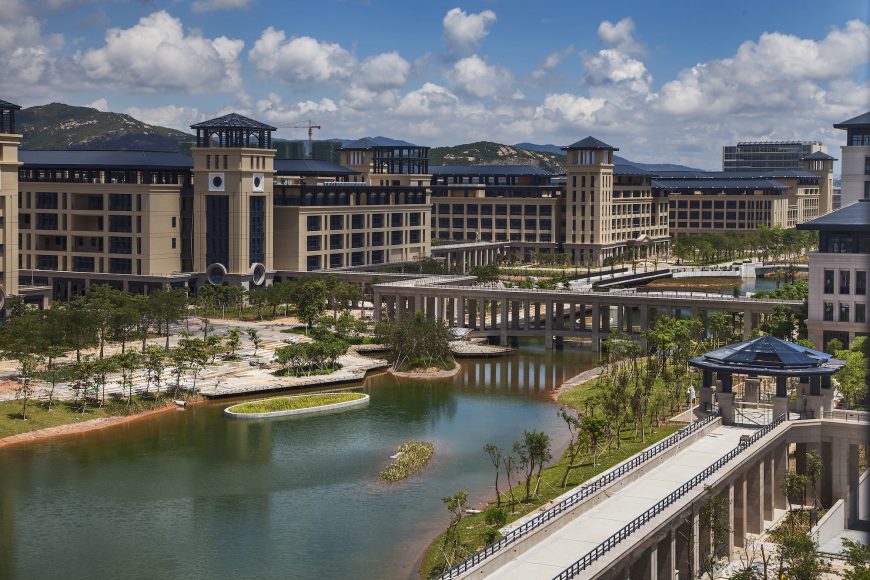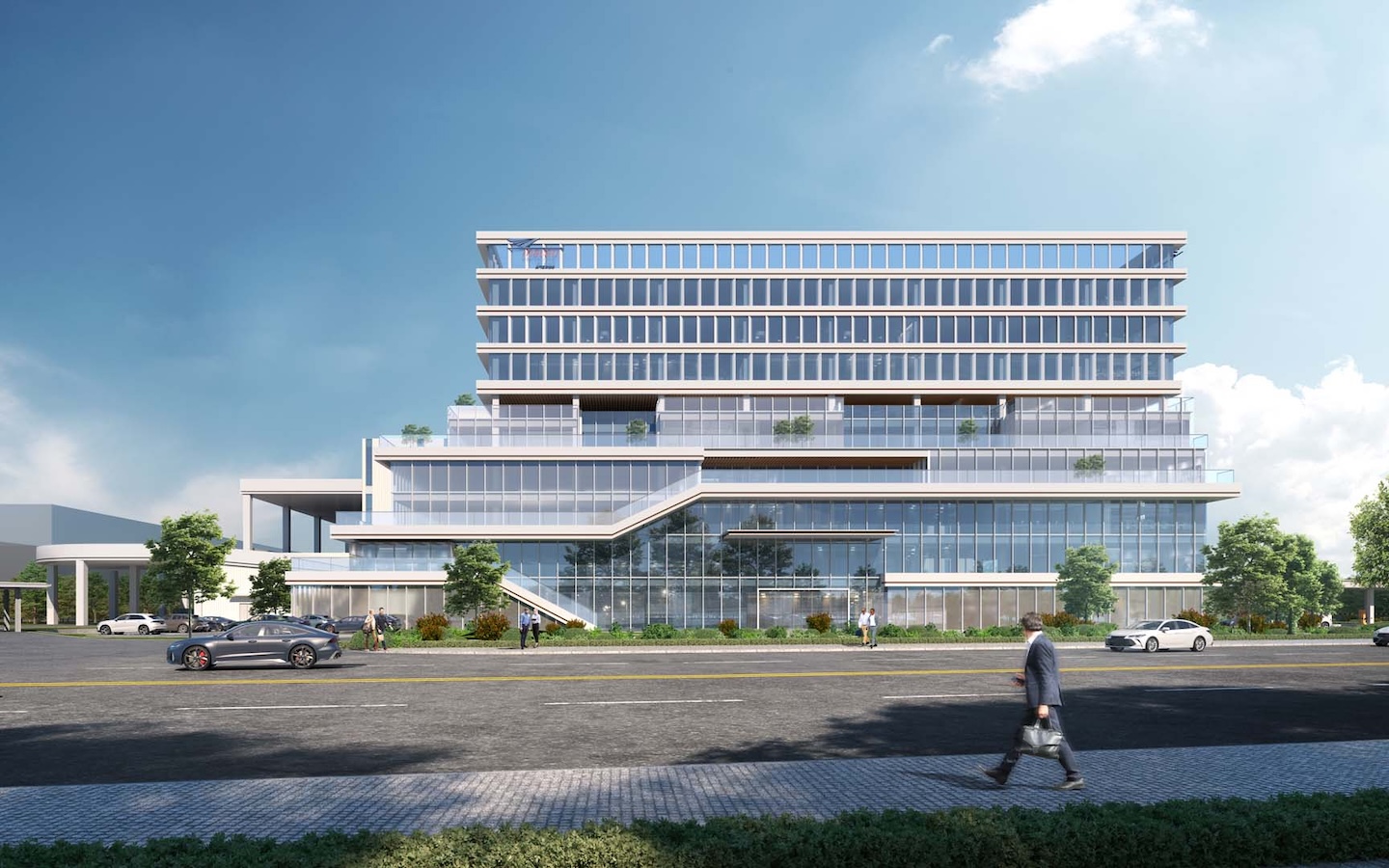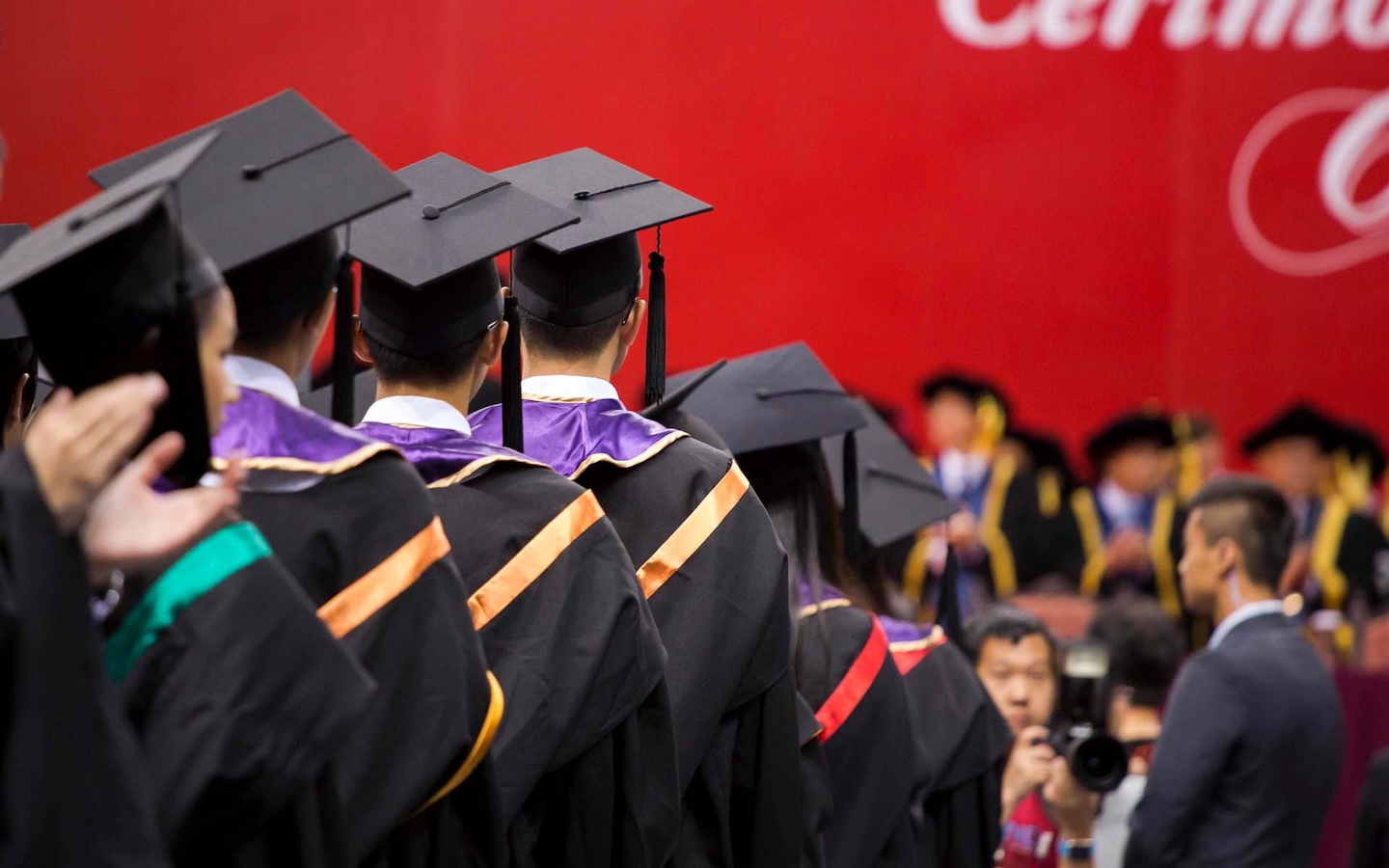The University of Macau, the oldest higher education institution in the former Portuguese enclave, began a move to a spacious new site 20 times the size of its previous campus on 20 July, turning a new page in the development of tertiary education in Macao. The new campus is located on Hengqin, a stone’s throw away from Macao’s Taipa island.
“Our aim is to build a university to last for 100 years,” said Rector Zhao Wei as he showed senior officials of the SAR government and journalists around the new site. “We will work hard to raise the quality of teaching and research and strive to help even more Macao high-school students go to university.
“We will have the best-quality hardware and equipment and will build up medical, IT, energy and other research centres. We will develop pioneering materials to meet the needs of society, attract top-class faculty staff and train top-class talent,” he said.
Since the new campus on Hengqin Island in Zhuhai will be under the laws of Macao, Internet access will be the same as in the existing one. Internet and telecommunications services will continue to be provided by Macao companies, meaning students will be able to see YouTube and Facebook. It will be exempt from the restrictions of China; mobile phone services will be the same. If a crime is committed, Macao laws will apply.
The new campus is a milestone in the history of the University of Macau, which, since its foundation in 1981, has operated on a cramped site on a hill in Taipa, with no room for expansion.
Now it has a sprawling residential campus, covering 1.09 square kilometers. It has over 80 buildings and a built-up area of 800,000 square metres, plus eight faculties and 10 residential colleges, each with space for 450 people. The latter are modelled on world-famous universities like Oxford and Harvard, in which faculty staff and students live together, interact with each other and learn self-discipline and independence.
It is designed like riverside cities in the Lingnan region, with gardens, inter-linking corridors and waterways. It encourages walking, will provide 1,085 parking places for bicycles, as well as shuttle buses. The use of private cars will be minimised. It has 25,000 trees, 110,000 square metres of waterscape and 430,000 square metres of green space.
The students will number 10,000, of whom 80 percent will be from Macao. Zhao said that they have fixed a ratio of eight Macao students to two from the mainland. “The university should serve Macao students. More local students will stay in Macao.”
History of the campus

It was in January 2007 that the university began to draw up a 10-year development strategy, with a plan for a new campus able to accommodate 10,000 students. In May that year, the university assembly and council discussed with then Chief Executive Edmund Ho Hau Wah the possibility of building a new campus on Hengqin, the island that borders the SAR, with a population at the time of only 4,000.
On 27 June 2009, the Standing Committee of the National People’s Congress in Beijing adopted a bill authorising Macao to have jurisdiction over the new campus, with a lease extending until 19 December 2049, the day when the 50-year “one country, two systems” of the SAR expires.
On 20 December 2009, then President Hu Jintao presided at a ground-breaking ceremony for the new campus. The architect was He Jingtang, who designed the China Pavilion for Expo 2010 in Shanghai; the cost of construction was 9.8 billion patacas, all from the SAR government. The government is paying the city government of Zhuhai, of which Hengqin is a part, 1.2 billion patacas to lease the land until 2049.
Just before midnight on 19 July 2012, a retaining structure of the tunnel that links the campus to Taipa partially collapsed, due in part to heavy rain over the previous two months. This delayed the construction process. Chau Vai Man, assistant co-ordinator of the Infrastructure Development Office, said on the opening day that the tunnel’s structure was now safe.
At midnight on 20 July, soldiers from the Guangdong border patrol handed over control to Macao police, who will have a station on the campus, as will the SAR’s fire brigade and customs department. Water, electricity and gas will come from Macao providers; so will the food.
The only point of access is a tunnel from Taipa, 1,570 metres long, with four lanes – two for vehicles, one for pedestrians and one for a pipeline. It will be open 24 hours a day. To reach the campus, students, faculty staff and visitors do not need to pass through immigration control.
One side of the campus is the channel that flows between Hengqin and Taipa. The other three sides are closed, with fences and an artificial river, and patrolled by members of the PLA. There is no access from Hengqin.
The campus will be the “greenest” place in Macao, with a waterrecycling system and solar water heating. Instead of separate air conditioning in each building, it uses a large underground district cooling system.
Rector Zhao said that the old campus will remain a place of education and research and not be re-developed. Its library will be a community centre for continuing education, offering evening courses in law, education and business administration.
Moving in
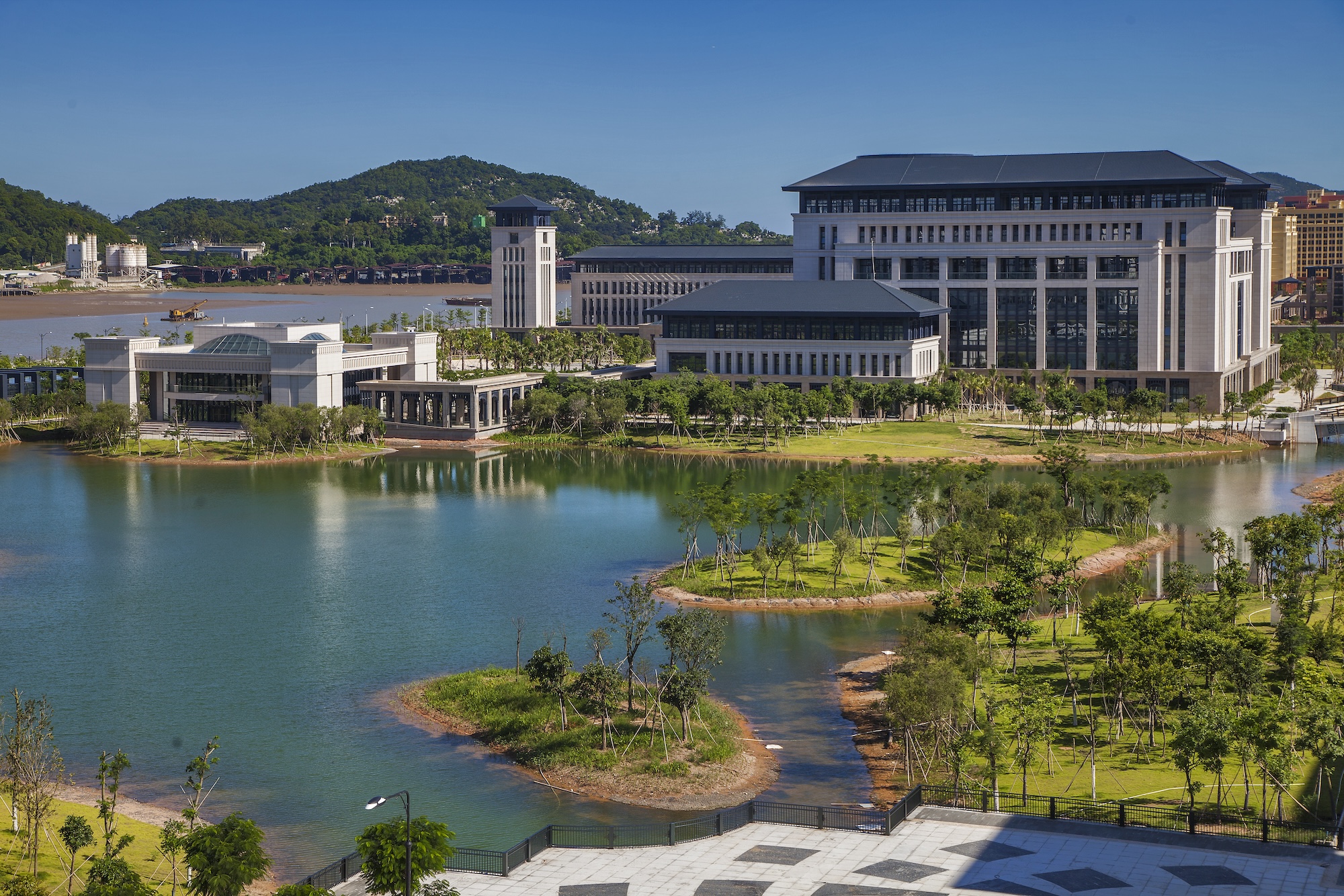
The move to the new site will be gradual. “The new site has been a huge and complex project,” said Zhao. It involves moving more than 600,000 books.
“In August, we will have some of our staff, professors and students piloting operations on the Hengqin campus and beginning to live there. The first 2,000 students will take up residence in September. The university is busy moving teaching facilities to the new campus.” During the first semester of the 2013/2014 academic year, most courses will be conducted on the old site.
The new one has eight faculties – law, education, design, business administration, science and technology, social sciences, arts and humanities and health sciences.
Cheong U, Secretary for Social Affairs and Culture, one of the guests on the opening day, said that the new campus would be in full operation and open to the public by February 2014. Cheong and the other guests were shown the new Wu Yee Sun library, the lake, the university hall, administration building and sports complex. The library was built with a donation of HK$150 million from the Wu Yee Sun Charitable Foundation; it is named after this prominent Macao businessman.
The visitors also saw the central teaching building, student activity centre, university mall, house for post-graduate students and accommodation for the faculty staff. The university hall has 1,000 seats and state-of-the-art equipment, making for excellent acoustic effects.
The mall contains 10 commercial outlets, including a bank, restaurant, café, supermarket, pharmacy, bookshop, travel agency and computer shop. The student activity centre contains a large bookshop and a service for staff and students to order books.
The campus also has a medical centre; but it does not offer a 24-hour service for the time being.
It has two state priority laboratories – for analog and mixed-signal VLSI and quality research in Chinese medicine. It also has one scientific research base and more than 280 dry, wet, electronic and computer laboratories.
New experience
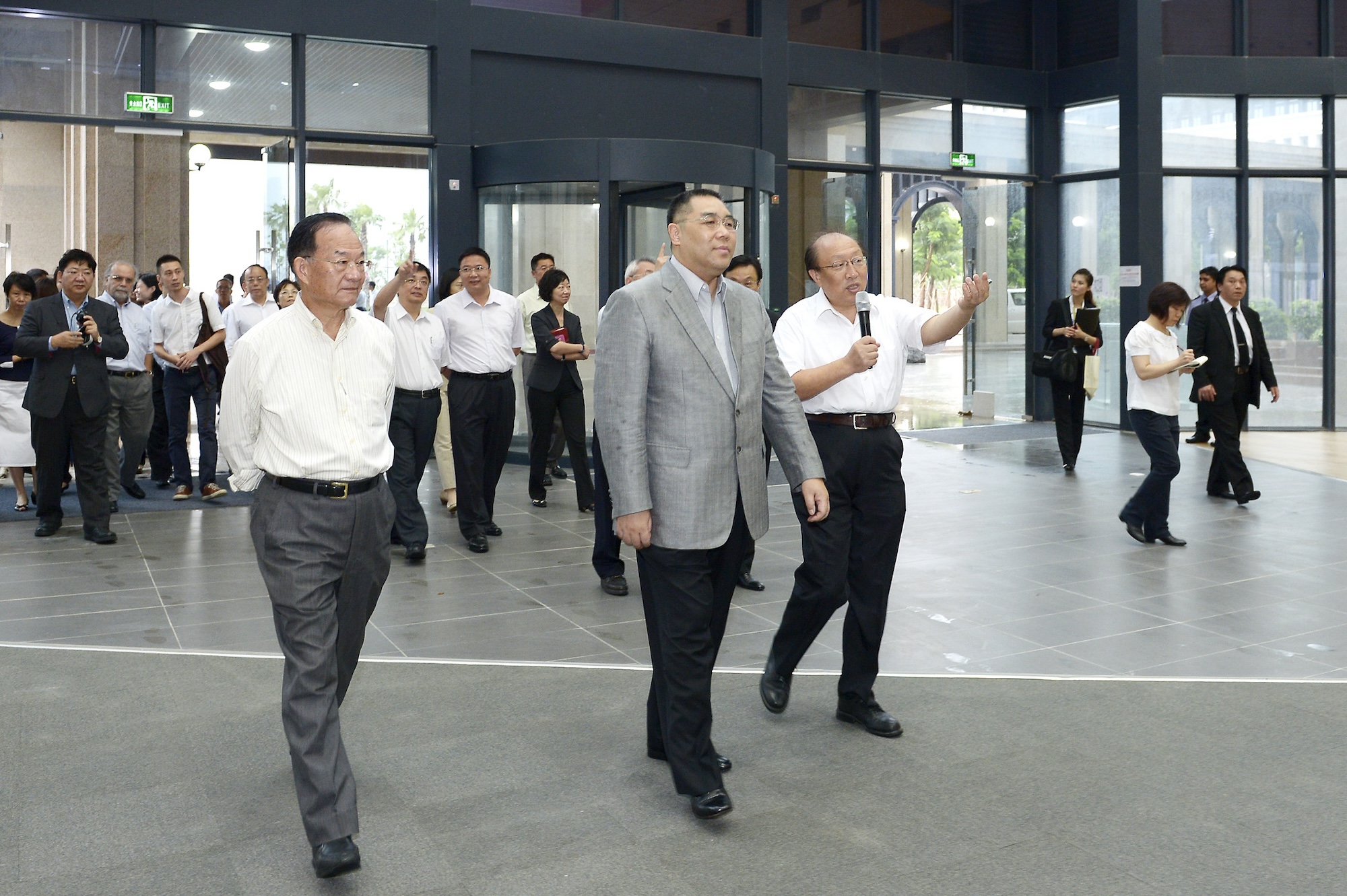
The size and modern facilities mean that studying on the new campus will be a different experience to that on the old site. All students admitted in or after the 2014/15 academic year will be required to live in a residential college during their first year; this will be a graduation requirement. In subsequent years, they can choose whether to stay in the colleges.
It will cost a local student 12,500 patacas to live in a college for one year, and 20,000 patacas for non-locals. The university says that these charges are less than half the actual cost.
The university aims to recreate the academic conditions and inter-personal connections of the great residential universities of the world; the students live on the campus through the term, rather than returning to small apartments each evening as they do now.
“We want to educate the whole person and not only in his chosen subject,” said Zhao. “We will use all 24 hours of the day for education, through sports, social interaction and extra-mural activities. Students will learn some music, arts and humanities. The university hopes that, by living and interacting with peers and academics, students will learn to think independently, develop their will and moral outlook and broaden their global perspective.”
The teaching language is English, except for language courses.
As of 25 March this year, the campus had about 8,600 students; the number will gradually increase to 10,000 in the future, after moving to the new campus. Approximately 70 percent of the students are undergraduates; the rest are post-graduates.
Of the undergraduates, the university will keep the ratio of local and non-local students at 8:2 but will adjust the ratio to 7:3 over ten years. As of the end of last year, the total number of full-time staff was 1,197, of whom 729 were administrative employees.
It recruits its academic staff internationally and in future will increase faculty staff in line with its actual needs.
Open to Macao people

The new campus is not only for the use of faculty staff, students and visiting lecturers but also all the citizens of the Special Administrative Region. Once all the preparatory work has been completed, the government expects the campus to be open to everyone in February 2014.
This means that ordinary people can go there to enjoy the open space, gardens, lake and green areas – a breath of fresh air in an overcrowded city.
Cheong U said: “Our citizens can go to the new campus to see performances, listen to music, take part in athletics events and just go for a walk, enjoy the food and have a coffee. It will increase the living space for Macao people.”
